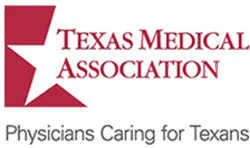At Vision 3C, we are ready to help the residents of San Antonio, TX, with many different eye issues, including cataracts.
Cataract Surgery
Cataracts affect a lot of people each year. The effects can be mild to severe and the treatment can range from watchful waiting to having cataract surgery to remove them. Generally, the thinking is that people should only have surgery if the cataracts are interfering with their quality of life.
When people talk about having cataracts, it means that the lens of their eyes has become cloudy. As a result, things look hazy, almost like looking through a car window that hasn't been cleaned in quite a while. The world will seem a lot less colorful. If that is the case, and it has worsened, then you should consider cataract surgery.
This surgery involves removing the cloudy lens and replacing it with an artificial lens that is clear. It's known as an intraocular lens and your vision should quickly improve after everything has healed.
The Process
We'll measure your eye and see what the proper focusing power should be for the artificial lens. You'll need to tell us about any medication you take, and you might need to skip a dose of one before the surgery.
Before the surgery, you'll be given eye drops to prevent infection and swelling. On the day of the surgery, you shouldn't eat at least six hours beforehand. We'll numb your eye with eyedrops, and you'll be awake. After that, we'll use a special microscope and use either a blade or laser to make very tiny incisions and then use small instruments to remove the lens and replace it with the new lens. After that, we'll put a shield over your eye to protect it while you heal.
This is an outpatient procedure. You will wait about 15 to 30 minutes before going home. Someone will have to drive you home.
Recovery
It's pretty straightforward after that. You may need eyedrops to help the healing process - follow all the directions there. Don't rub your eye and don't get soap or water directly in it. Wear an eye shield while you sleep to avoid rubbing it in the middle of the night.
Your recovery will depend on how well you heal and follow the directions. That will also affect when you can get back to regular activities. We'll gladly answer any questions you might have throughout.
Comprehensive Vision Care in San Antonio
Do you live in San Antonio, TX, and need cataract surgery or other eye care? Contact Vision 3C for an appointment at (210) 538-2020. Be sure to ask us about our free LASIK consultation.









